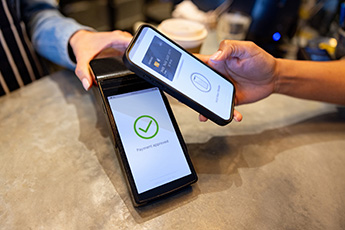The mobile payment market is expanding rapidly. According to Facts and Factors research, the global mobile payment market is expected to reach $5.5T in 2026 from $290B in 2019.This growth has definitely been stimulated by the flurry of contactless payments and mobile wallets usage spurred by consumer demand and merchant adoption during the pandemic. Debit card transaction growth has been especially robust. The Federal Reserve Bank of SF’s Diary of Consumer Payment Choice report finds debit cards are used the most and they have the highest levels of stated preference at 42%. Both Visa and Mastercard reported a 20% growth in debit volume and 5-10% decreases in credit use during Q3 2020.Still, when trying to reconcile the costs of technology upgrades, investing heavily in mobile technology may not appear feasible for some community financial institutions (CFIs). We share how one of your peers took the leap into the mobile wallet realm and reaped the rewards.This CFI located in MS with $1.6B in assets reported 6.4% growth in interchange income from 2019 to 2020. Much of this growth was attributed to their mobile wallet offering, with a 305% increase in mobile wallet transaction volume and a 2,500% jump in the average ticket amount. Let’s explore a little more deeply how they did this.Strategy to be “top-of-wallet” with recurring expenses. The CFI encouraged customers to use its debit card for repeating monthly expenses like utilities, cell phone plans, and insurance. It also worked well with subscription services, such as video or music streaming, in addition to the popular recurring grocery and meal plan deliveries. Their strategy was to become “top-of-wallet”; not to be the card a customer thinks to use first, but, the card they never have to think twice about. One other interesting side benefit was these recurring payments are billed as card-not-present, which offer higher interchange fees. Nice benefit!Data mining for customer payment trends. Working with a third-party, the CFI was able to gain more insights into the types of payments customers made using a mobile wallet. Having that visibility allowed the institution to get creative with card offers. They identified customers who had not made certain types of large purchases and provided them with tailored rewards on the debit card. A deeper knowledge of customer spending habits can also serve as a tool for developing your financial health initiatives. Are you ready to implement your own mobile wallet? There is still a lot to consider before taking the plunge, of course. But, now you know how it can be done.

BID® Daily Newsletter
Jan 11, 2021
BID® Daily Newsletter
Jan 11, 2021

How One Of Your Peers Succeeded With Mobile Wallets
Summary:
Are mobile wallets worthwhile for community financial institutions? We show you how one of your peers succeeded through the power of recurring expenses and the use of data mining.
Subscribe to the BID Daily Newsletter to have it delivered by email daily.
Related Articles:

Why CFIs Should Focus on Getting Digital Wallet Share
By 2027, 51% of e-commerce purchases will be via digital wallet. We discuss why digital wallet share is important for CFIs, along with strategies to get the top spot.
By 2027, 51% of e-commerce purchases will be via digital wallet. We discuss why digital wallet share is important for CFIs, along with strategies to get the top spot.

The Surprising Staying Power of Checks
Many businesses still rely on checks for B2B payments. We discuss how CFIs can support check usage among their SMB customers while promoting the adoption of modern payment methods.
Many businesses still rely on checks for B2B payments. We discuss how CFIs can support check usage among their SMB customers while promoting the adoption of modern payment methods.
